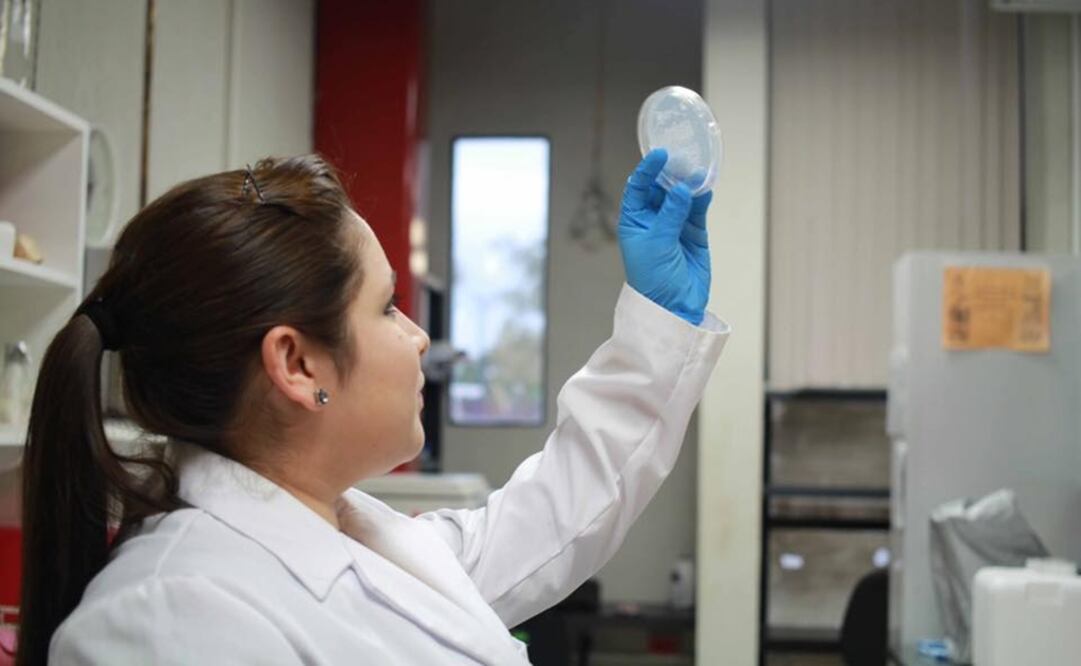Más Información

Detienen a sujeto que ingresó con vehículo a zona protegida del Nevado de Toluca; es puesto a disposición de la FGR

"No tengo nada que ocultar" asegura Carlos Torres, exesposo de Marina del Pilar; está acusado de tráfico de armas y lavado de dinero

Despliegan operativo de búsqueda para localizar a la tiktoker “Nicholette”; fue privada de la libertad en Culiacán

Partido Verde esperará iniciativa de reforma electoral para presentar su propuesta; Manuel Velasco destaca diálogo

Más de 300 periodistas encarcelados en el mundo en 2025; China, Birmania e Israel encabezan la lista, alerta CPJ
A scientist from the National Polytechnic Institute (IPN) has created a skin patch capable of enhancing the scarring process of wounds and ulcers caused by diabetic foot disease, a serious complication of diabetes.
The patch also helps eliminate infections caused by antibiotic-resistant bacteria, which usually hamper diabetes treatments, thus helping reverse amputation rates associated with the disease.
Through a press release, the scientist from the Genomics Biotechnology Center, Christian Mariel Sáenz Santos , explained that the patch was made with bio-polymers that help in the healing process.
Moreover, the patch contains a bacteria called Bdellovibrio bacteriovorus that eliminates microorganisms in diabetic foot wounds, even those that are resistant to antibiotics.
The patch is also resorbable; once it is placed on the wound, it is not necessary to remove it. “This will help us avoid breaking up scar tissue; the patch also acts as a barrier to prevent microorganisms from entering the wound,” she stated.
The patch constitutes a significant medical alternative to treat diabetic foot; however, when the lesions are more serious and the limb shows signs of gangrene, the patient is less likely to recover.
“Depending on the situation of the patient, specialists will determine whether they should use the patch only or if they should combine it with antibiotics,” she commented.
Pre-clinical trials were conducted on mice and the treatment showed positive results. The scarring process observed on diabetic mice was similar to that of healthy mice, while another group of mice that was only subject to antibiotics treatment showed a much slower scarring process.
Sáenz Santos emphasized that high glucose levels in the bloodstream usually slowed down the scarring process in diabetic patients.
“If we add an infection, the situation can become more complicated. When the microorganism becomes resistant to antibiotics, the health problem becomes chronic. Through the use of this patch, we expect to help diabetic patients overcome this condition in the medium term. We want the patch to come at a low cost so that we can help as many people as we can,” she stressed.
More than 100 thousand people in Mexico have suffered amputations as a result of diabetes, according to health institutions and civil associations.
Due to the contribution of the investigation, the IPN is working to obtain a patent register before Mexico’s Industrial Property Institute (IMPI) .
Furthermore, the institution will seek to establish coordination mechanisms with hospitals to begin clinical trials and evaluate treatment on patients with diabetic foot.
dm
Noticias según tus intereses
[Publicidad]
[Publicidad]










